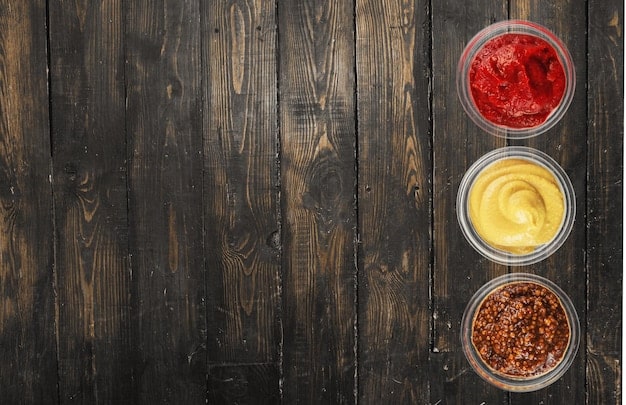Grill Master Secrets: Husband’s BBQ Guide to Impress Guests

Husband’s Guide to Mastering the Grill: Impress Your Guests with These 3 BBQ Secrets offers insightful tips on selecting the right grill, mastering essential grilling techniques, and creating unforgettable flavor combinations to elevate your backyard barbecue game.
Ready to transform your grilling game and become the BBQ hero of your neighborhood? This Husband’s Guide to Mastering the Grill: Impress Your Guests with These 3 BBQ Secrets will equip you with the knowledge and skills to create mouthwatering dishes that everyone will rave about.
Choose Your Weapon: Selecting the Right Grill
The first step to BBQ mastery is choosing the right grill. There are many options available, each with its strengths and weaknesses. Understanding these differences will help you select the grill that best suits your needs and grilling style.
Charcoal vs. Gas: The Great Debate
The age-old debate: charcoal or gas? Each has its loyal followers, and for good reason. Charcoal grills are known for imparting a smoky flavor that’s hard to replicate with gas.
Gas grills, on the other hand, offer convenience and precise temperature control, making them ideal for weeknight dinners.
- Charcoal Grills: Provide a classic smoky flavor, require more skill to manage temperature.
- Gas Grills: Offer convenience and precise temperature control.
- Pellet Grills: Combine the flavor of charcoal with the convenience of gas, using wood pellets as fuel.
- Kamado Grills: Versatile ceramic grills that excel at both high-heat searing and low-and-slow smoking.
Ultimately, the best grill is the one that you’ll use most often. Consider your lifestyle, cooking preferences, and budget when making your decision.

Mastering the Flame: Essential Grilling Techniques
Once you’ve chosen your grill, it’s time to master the essential grilling techniques. These techniques will allow you to cook different types of food to perfection, ensuring juicy and flavorful results every time.
Direct vs. Indirect Heat: Understanding the Difference
One of the most important concepts in grilling is understanding the difference between direct and indirect heat. Direct heat is used for searing and cooking foods quickly, while indirect heat is used for slow cooking and smoking.
Knowing when to use each technique is crucial for achieving optimal results.
Searing Secrets: Achieving the Perfect Crust
A good sear is essential for achieving a flavorful crust on steaks, chops, and other meats. To get a perfect sear, make sure your grill is preheated to a high temperature.
Pat the meat dry before placing it on the grill, and avoid moving it around too much. Let it cook undisturbed for several minutes until a golden-brown crust forms, then flip and repeat on the other side.
- High Heat: Preheat your grill to a high temperature for searing.
- Dry Meat: Pat the meat dry before grilling to promote browning.
- Don’t Move It: Avoid moving the meat around too much while searing.
- Proper Tools: Use a good set of tongs and a meat thermometer.
Flavor Alchemy: Unforgettable BBQ Combinations
Now that you’ve mastered the essential grilling techniques, it’s time to experiment with flavor combinations. The possibilities are endless, and the best way to discover your favorite combinations is to try new things.

The Art of Rubs: Dry vs. Wet
Rubs are a great way to add flavor and create a crust on your meat. Dry rubs are made from a blend of spices, while wet rubs include a liquid component such as oil, vinegar, or mustard.
Experiment with different spice combinations to create your signature rub.
Sauce Sensations: From Tangy to Sweet
BBQ sauce is another essential element of a great barbecue. There are countless variations, from tangy vinegar-based sauces to sweet tomato-based sauces.
Consider the type of meat you’re grilling and the flavor profile you’re going for when selecting a sauce.
- Experiment with Spices: Try different combinations of herbs and spices to create unique rubs.
- Consider the Meat: Choose sauces and rubs that complement the flavor of the meat.
- Wood Chips: Experiment with different wood chips to add smoky flavor.
- Don’t Be Afraid to Mix: Combine different sauces and rubs to create your own signature flavor.
By experimenting with different flavor combinations, you can create memorable BBQ experiences that will impress your guests and keep them coming back for more.
Accessorize Your Grill: Essential Tools and Gadgets
Having the right tools can greatly enhance your grilling experience. While not strictly necessary, certain gadgets can make the process easier, safer, and more enjoyable. Let’s explore some essential grilling tools that every husband should consider.
Tongs, Spatulas, and Forks: The Holy Trinity
A good-quality set of tongs, spatulas, and forks is indispensable for any grill master. Tongs allow you to grip and flip food with precision, while spatulas are ideal for burgers and delicate items. Forks, although sometimes debated, can be useful for testing the tenderness of meats.
Opt for tools made from stainless steel, as they are durable and easy to clean.
Meat Thermometers: Ensuring Perfection
Overcooked or undercooked meat can ruin a barbecue. A reliable meat thermometer is crucial for ensuring your dishes are cooked to perfection. Instant-read thermometers provide quick readings, while leave-in thermometers allow you to monitor the temperature of the meat without opening the grill.
Investing in a good meat thermometer is an investment in the quality of your food.
- Grill Brush: Keep your grill grates clean for optimal performance.
- Basting Brush: Apply sauces and marinades evenly.
- Grill Basket: Perfect for grilling vegetables and small items.
- Smoker Box: Add wood chips for smoky flavor on a gas grill.
Equipping yourself with the right tools will not only make grilling easier but also help you achieve more consistent and delicious results.
Safety First: Grilling Tips for a Worry-Free BBQ
While mastering the grill is exciting, safety should always be your top priority. Grilling involves high temperatures and potential hazards, but with the right precautions, you can ensure a safe and enjoyable BBQ experience for yourself and your guests.
Grill Placement and Stability: A Solid Foundation
Always place your grill on a stable, level surface, away from flammable materials such as wooden decks, fences, and overhanging trees. Ensure there is adequate ventilation to prevent carbon monoxide buildup.
Never leave the grill unattended while it’s in use.
Handling Hot Surfaces: Protective Gear
Wear heat-resistant gloves or mitts when handling hot grill grates, charcoal starters, or other hot surfaces. Use long-handled tools to avoid getting too close to the heat.
Keep a fire extinguisher nearby in case of flare-ups.
- Clean Grill: Remove grease buildup to prevent flare-ups.
- Safe Distance: Keep children and pets away from the grill.
- Proper Ventilation: Ensure adequate airflow to avoid carbon monoxide poisoning.
- Emergency Plan: Have a plan in place in case of an accident.
By following these safety tips, you can minimize the risks associated with grilling and enjoy a worry-free barbecue.
Beyond the Basics: Advanced Grilling Techniques
Once you’ve mastered the fundamentals, it’s time to explore advanced grilling techniques that will take your BBQ skills to the next level. These techniques require more patience and attention to detail, but the results are well worth the effort.
Low and Slow Smoking: The Art of Patience
Smoking is a technique that involves cooking meat at low temperatures for extended periods, infusing it with smoky flavor. This method is ideal for tough cuts of meat such as brisket, ribs, and pork shoulder.
Use a smoker or a grill with a smoker box to maintain a consistent temperature and add wood chips for flavor.
Reverse Searing: The Best of Both Worlds
Reverse searing is a technique that involves cooking meat at a low temperature until it reaches your desired internal temperature, then searing it over high heat to create a flavorful crust.
This method ensures a perfectly cooked interior and a beautifully seared exterior.
- Temperature Control: Maintain a consistent temperature for smoking.
- Wood Chip Selection: Choose the right wood chips to complement the meat.
- Meat Placement: Position the meat away from direct heat for even cooking.
- Marinades: Use marinades to add flavor and moisture to the meat.
By mastering these advanced grilling techniques, you can create BBQ masterpieces that will impress even the most discerning palates.
| Key Point | Brief Description |
|---|---|
| 🔥 Grill Selection | Choose the right grill (charcoal, gas, pellet) based on your needs. |
| 🥩 Grilling Techniques | Master direct/indirect heat and searing for perfect results. |
| 🧂 Flavor Combinations | Experiment with rubs and sauces for unique BBQ flavors. |
| 🧤 Essential Tools | Use tongs, thermometers, and brushes for safer and better grilling. |
Frequently Asked Questions
▼
A gas grill is often recommended for beginners due to its ease of use and temperature control. You can easily adjust the heat and cook food evenly without the learning curve of charcoal.
▼
Regularly clean your grill to remove grease buildup, trim excess fat from meats, and avoid using too much oil or marinade. Keep a spray bottle of water nearby to quickly extinguish flare-ups.
▼
The ideal internal temperature for steak depends on your desired doneness. Rare is 125-130°F, medium-rare is 130-140°F, medium is 140-150°F, medium-well is 150-160°F, and well-done is 160°F+.
▼
Yes, you can use wood chips on a gas grill by placing them in a smoker box or wrapping them in foil with a few holes. This will allow you to add smoky flavor to your food even on a gas grill.
▼
You should clean your grill grates after each use to remove food residue and prevent buildup. A deeper cleaning, including removing and cleaning the burners and other components, should be done every few months.
Conclusion
Mastering the grill is a journey that combines technique, experimentation, and a passion for flavor. By applying these BBQ secrets, any husband can elevate his grilling game, impress guests, and become a true grill master, creating memorable experiences one delicious meal at a time.





